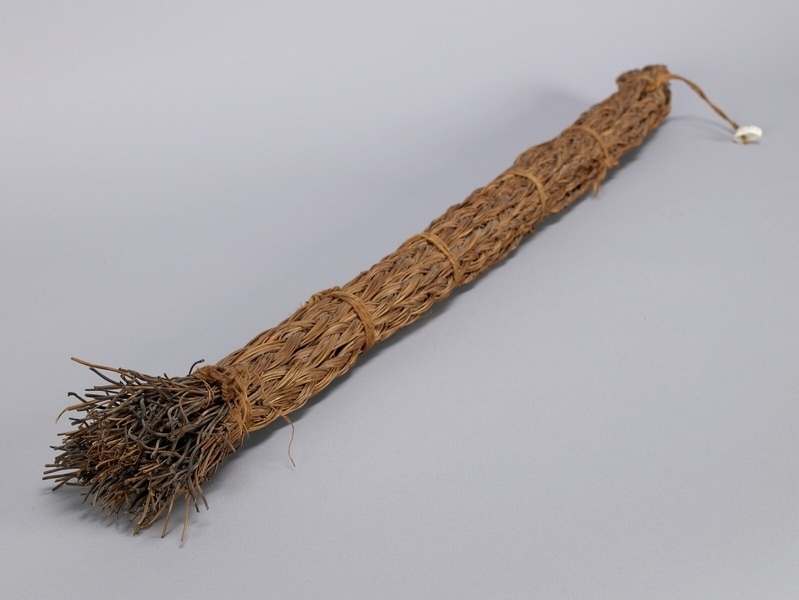Wok Brush Item Number: Edz1013 from the MOA: University of British Columbia


Description
Long bundle of braided stem-like material; unbraided, flaring and slightly blackened at bottom. Bound in six places with twine. Twine loop for hanging at top.
History Of Use
In the past, until about 1960, every family had several of these brushes, as they were needed to clean out the big woks used to cook rice, food for pigs, and other foods. Two would be worn out in the course of a year. Although the vines were readily available, women always went to gather them on the morning of the Dragon Boats Festival. They dried the vines, and then braided and bound them. The brushes are very tough. In 1976, when this brush was donated, people in Kwan Mun Hau village no longer raised pigs, and rice was generally not cooked in woks, so the brushes were used only on the occasions of festivals and banquets, when big woks were used to cook large quantities of food.
Specific Techniques
After vines had been gathered, they were dried and then braided, combined, and bound to form the brush.
Narrative
Mrs. Yau Chan, Shek-ying gave this wok brush that she had made to Elizabeth Johnson to add to the Chinese collections of the Museum of Anthropology. She understood the importance of preserving objects that provided evidence of the local history that she had experienced, and she gave significant support to the collection and documentation of many objects in the Museum of Anthropology’s Hong Kong collections.
Mrs. Yau made this wok brush when she was pregnant with her fifth child.
Item History
- Made by Chan Shek-Ying Yau (Maker) in Tsuen Wan, Hong Kong, China during 1955
- Collected by Elizabeth L. Johnson during 1976
- Owned by Chan Shek-Ying Yau
- Owned by Elizabeth L. Johnson before January 23, 1978
- Received from Elizabeth L. Johnson (Donor) on January 23, 1978
What
Who
- Culture
- Chinese: Hakka
- Creator
- Chan Shek-Ying Yau (Maker)
- Field Collector
- Elizabeth L. Johnson
- Previous Owner
- Chan Shek-Ying Yau and Elizabeth L. Johnson
- Received from
- Elizabeth L. Johnson (Donor)
Where
- Holding Institution
- MOA: University of British Columbia
- Made in
- Tsuen Wan, Hong Kong, China
When
- Creation Date
- during 1955
- Collection Date
- during 1976
- Ownership Date
- before January 23, 1978
- Acquisition Date
- on January 23, 1978
Other
- Condition
- good
- Accession Number
- 0431/0001